|
|
|
|
|
|
|
Achi-Kochi Japan
Showing many places to visit and foods to eat in Japan
|
|
|
|
|
|
|
|
|
|
|
|
|
Japan
> Themes
> Wild Animals
|
|
|
|
|
|
|
Wild Animals
( Achi-Kochi Japan )
|
|
|
|
|
|
|
|
|
|
|
|
|
( "Achi-Kochi" in Japanese means "Here and there" in English. )
Wild Animals
Tourists, visiting many places in Japan, would have opportunities to see various wild animals, especially in the countryside. Tourists could see wild animals incidentally, while there are many companies which offer tours and cruises for tourists to see wild animals.
|
Shachi ( Killer Whales )
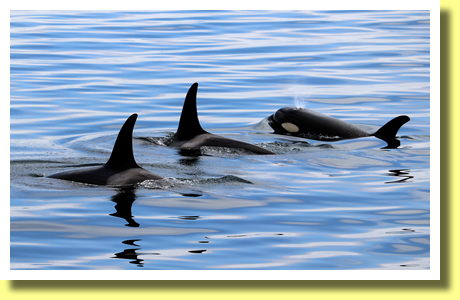
There is a small town named "Rausu" in the south of Shiretoko Peninsula, Hokkaido. The town has a fishing port where sightseeing cruise boats leave and enter. The boats offer tourists the landscape of Shiretoko Peninsula and opportunities to see wild animals and birds. Shachi ( Killer Whales - above ) could be seen through May-July. The waters near Rausu is a significant habitat area of Killer Whales.
In the areas, some other animals and birds could be seen, such as Dall's porpoise through May-October, Sperm Whales through July-October, Minke Whales through May-July, Sea Eagles through January-March and White Tailed Eagles through January-March as well as Drift Ice in January.
|
Higuma ( Brown Bears )
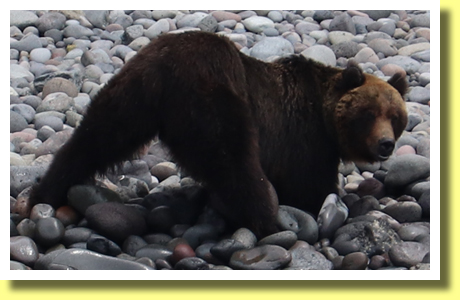
Shiretoko Peninsula is famous for rich nature, where live many Higuma ( brown bears - above ), whom tourists could see. However, sometimes brown bears would attack people and seeing them in the forests and/or mountains could be extremely dangerous. Some of them are taller than 2 meters and heavier than 200 kgs.
So it would be reccomended to join cruise boat tours leaving Utoro port, located on the north of Shiretoko Peninsula. The cruise tours could offer tourists opportunities to see brown bears walking around the seashore. Cruise tours are operated through end of April - 1st half of October. Brown bears are very active through May - July.
|
Tanchou-Zuru ( Red Crowned Crane )
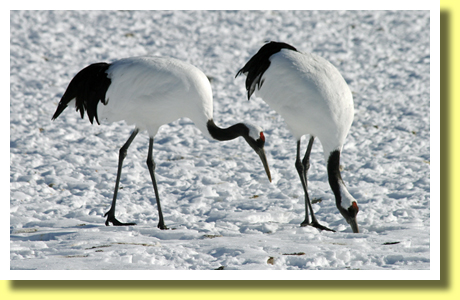
Tanchou-Zuru ( Red Crowned Crane or Japanese Crane - above ) is one of the most beautiful birds. More than 1,500 Tanchou-Zuru live in Kushiro Shitsugen ( Kushiro Wetland ), where the above photo was taken. Some Tanchou-Zuru could be seen in Russia, Mongolia and China in summer.
Tanchou-Zuru in Kushiro Shitsugen are wild and feed by themselves here and there in the wetland. However especially in winter, it is so difficult for them to find plenty of food. So they move to places where they are fed. So it is easier in winter to see them than in other seasons. In addition, they are so beautiful especially in snow.
|
Ezo Shimarisu ( Ezo Chipmunks )
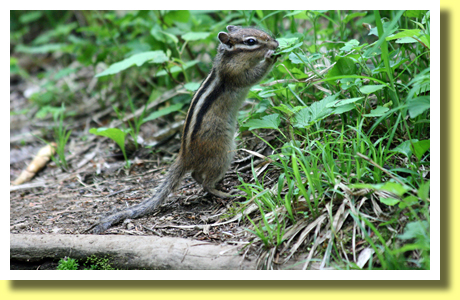
Ezo Shimarisu ( Ezo chipmunks - above ) live in forests in Hokkaido. Their length is about 20-30cm including tails, weight about 100g. The above photo was taken in a forest in Rishiri-to Island, where tourists could see sesame seals, Steller's sea eagles, white-tailed eagles and so on.
|
Akashobin ( Ruddy Kingfisher )
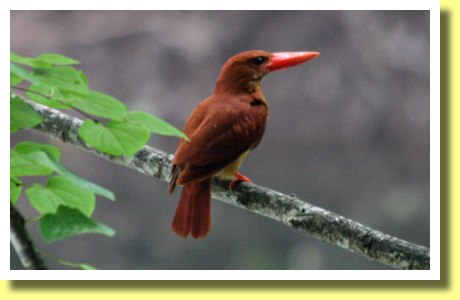
In the forests throughout Japan, tourists could see Akashobin ( ruddy kingfisher - above ), who live around east and southeast Asia and fly to Japan in summer. They feed on frogs, amphibians, fish, crustaceans and insects. So they like deep forests near lakes/ponds such as Juniko area in Shirakami Sanchi in Aomori Pref., Tohoku Region, where the above photo was taken.
|
Kiji ( Japanese green pheasant )
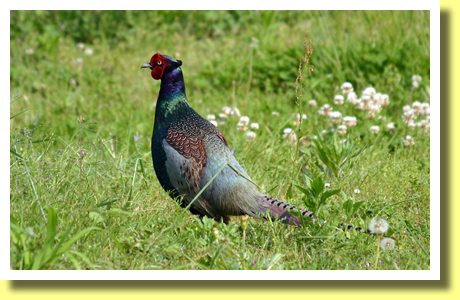
Kiji ( Japanese green pheasant ), the National Bird of Japan, could be seen in grassland, woodland and so on throughout Japan except in Hokkaido. The above photo was taken in Hidaka City, Saitama Pref., Kanto Region. It is said that they are endemic to Japanese archipelago. They were introduced in Hawaii. They feed on insects, worms, plants and grains.
|
Nihonzaru ( Japanese macaque )
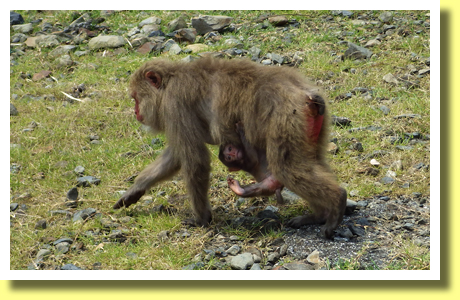
Tourists could see Nihonzaru ( Japanese macaque - above ) in forests throughout Japan except in Hokkaido. The above photo was taken in Kashima Islands, Ainan-cho Town, Ehime Pref., Shikoku Region. Nihonzaru ( known as snow monkey ) is the northernmost-living nonhuman primate. Some inhabit the north of Tohoku Region while some live in the south of Kyushu Region.
Nihonzaru is extremely omnivorous and feeds on a few hundreds kinds of food such as insects, eggs, fruits, seeds, leaves, frogs and so on. Sometimes some eat field crops.
Nihonzaru is one of the most intelligent wild animals. It was reported that some wash their food with fresh water and season with sea water. Some, living in Jigokudani, Nagano Pref., Koh-Shin-Etsu Region, are famous for bathing in hotspring.
However there are some which behave naughty. So tourists are expected to be careful and not to feed them.
|
Katsuo-dori ( Brown Booby )
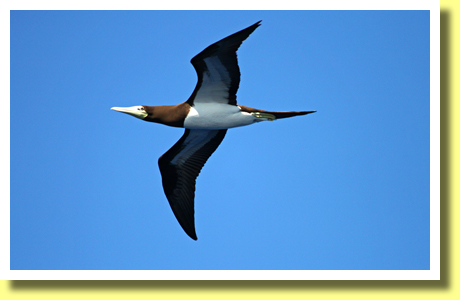
Katsuo-dori ( Brown Booby ) nests and breeds on some of Ogasawara Islands, which is one of UNESCO World Natural Heritage Sites. They fly around the islands to catch squids and fishes. So passengers, on board liner ships connecting Tokyo and Ogasawara, could see Katuo-dori flying arounds.
|
Ogasawara Tokage ( Ogasawara Snake-eyed Skink )

Ogasawara Islands have never been a part of the continent. So there live many endemic plants and animals, one of which is Ogasawara Tokage ( Ogasawara snake-eyed skink - above ). It is said that waves brought their ancestors on driftwood to the islands from the southern Pacific Ocean and they evolved endemically.
However they are threatened by Green Anole ( American Chameleon ), which are not native to Ogasawara Islands, but brought from U.S.A. in 1960s. Now millions of green anole live in Ogasawara Islands and have exterminated some of endemic insects, on which Ogasawara Tokage feed. Also green anole eats Ogasawara Tokage sometimes.
|
Raicho ( Rock Ptarmigan )
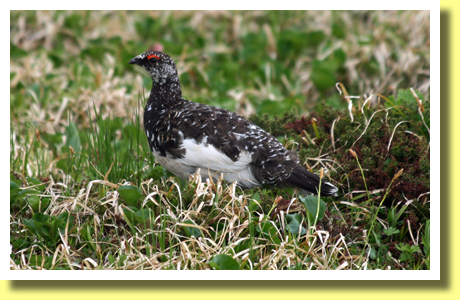
Tourists, visiting Tateyama in Toyama Pref., Hokuriku Region, could see Raicho ( Rock Ptarmigan - above ). They live at altitudes higher than 2,200 meters such as in Japanese Alps. Their feathers moult from dark in summer to white in winter. However it is not easy to see their white feathers because it is difficult to climb up the mountains in winter.
It is said that the ancestors of Raicho moved to Japanese archipelago in the ice age about 20,000 years ago. At the end of the ice age, most of them moved back to the north except some living in Japanese Alps. Now a few thousands of Raicho live in Japan. However they are in danger of extinction due to foxes, nihonzaru, crows and so on. Raicho is designated one of National Special Natural Monuments of Japan.
|
Iruka ( Dolphin )
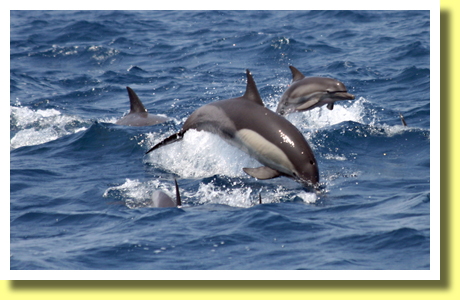
There are numbers of companies who operate whale/dolphine watching cruise boat tours, which help tourists see whales and/or dolphins. Dolphins feed mainly on fish and squid. Most of their calves are born in spring and mothers look after their calves. So, in summer, tourists on board cruise boats could see a calve and a mother in pods jumping as shown in above photo, which was taken off the coast of Kochi Prefecture, Shikoku Region.
|
Shika ( Sika Deer )
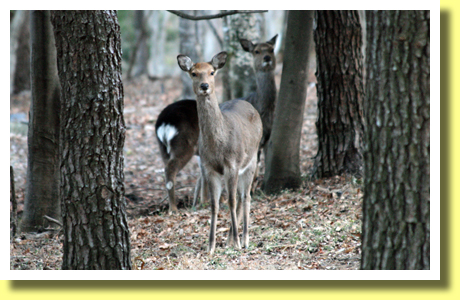
Early in the morning, tourists, walking around the hotels, could see Shika ( Sika Deer or Japanese Deer ) in a forest or its surrounding grassland. The above photo was taken in a forest near Kirishima Onsen, Kagoshima Pref., Kyushu Region.
Though sika deer is extinct or nearly so in many areas, it is overpopulated in Japan and threatening woodlands and farmlands. It is said that its population is more than three million in Japan. Many sika deers walk around Nara City, Nara Pref., Kinki Region as well as in Miya-jima, Hiroshima Pref., Chugoku Region.
|
Copyright (c) 2021 Achi-Kochi Zanmai Co., Ltd.
|